Holland family, affected by autism, speaks out against seclusion and restraint in schools
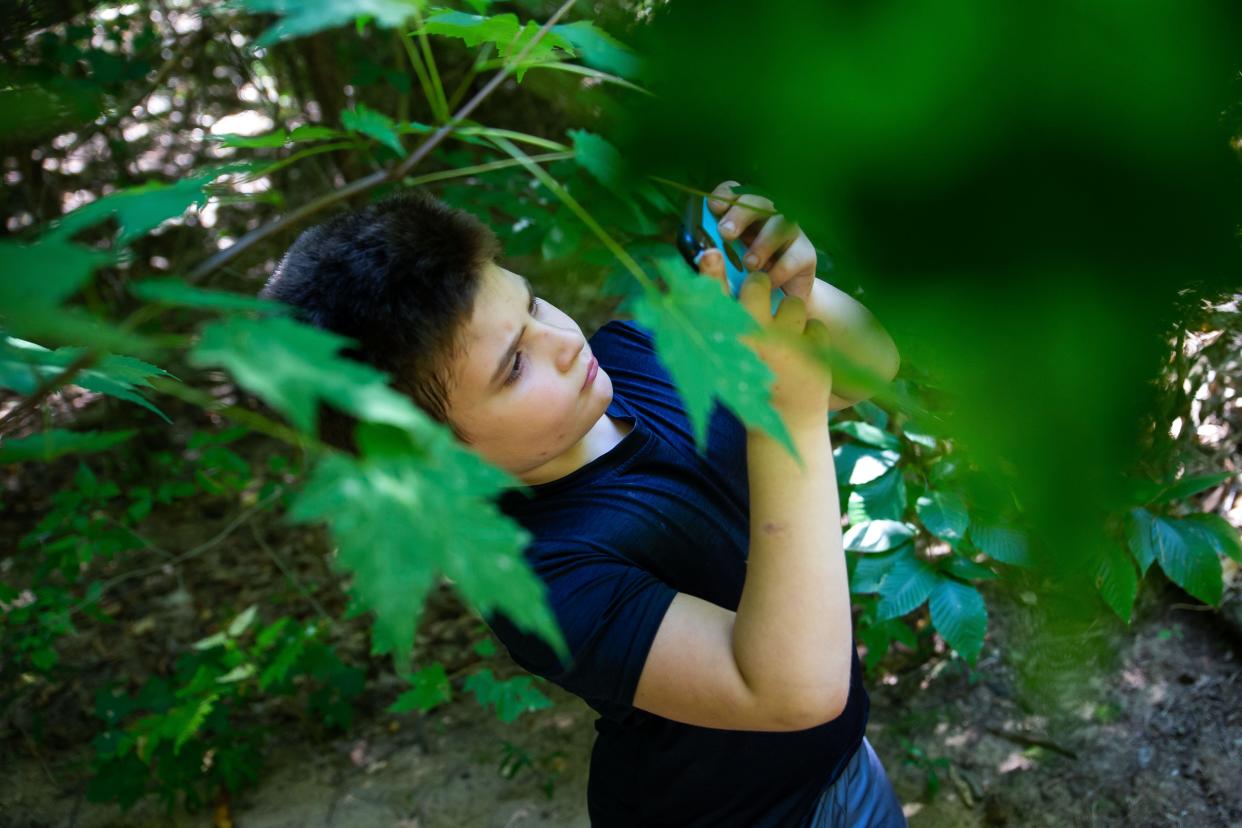
HOLLAND — Kai Atallah can’t forget the bright lights.
The 9-year-old from West Michigan isn’t talking about the sun streaming through a classroom window. Not the shine of a bottle rocket zooming into the sky as he watches with his Cub Scout troop, or the spotlight spinning from the fedora worn by Inspector Gadget, one of his favorite television characters.
He’s referring to the harsh barbs of overhead fluorescent bulbs that are etched into his memory, shining down onto the white concrete walls and firm carpet of a room he could not escape.
“You’re trapped, and alone, in a room and you can’t get out," Kai said, his words coming rapidly. "And you just get more and more frustrated and more and more angry and more and more upset."
“I kicked the door, pounded on the door. Yelled.”
Kai is one of thousands of Michigan schoolchildren subjected in the last five academic years to practices meant only for emergencies: seclusion and restraint.
While state lawmakers tried to ban the tactics in 2016, a Free Press investigation found educators across the state secluded or restrained students nearly 94,000 times in the last five school years. The state began collecting data in the 2017-2018 school year following the passage of new laws.
That means on average, more than 100 times a day, Michigan educators used what experts say are psychologically damaging practices on children. Considering most schools limited or canceled in-person classes for weeks or months due to the COVID-19 pandemic, the daily usage of both seclusion and restraint are likely much higher.
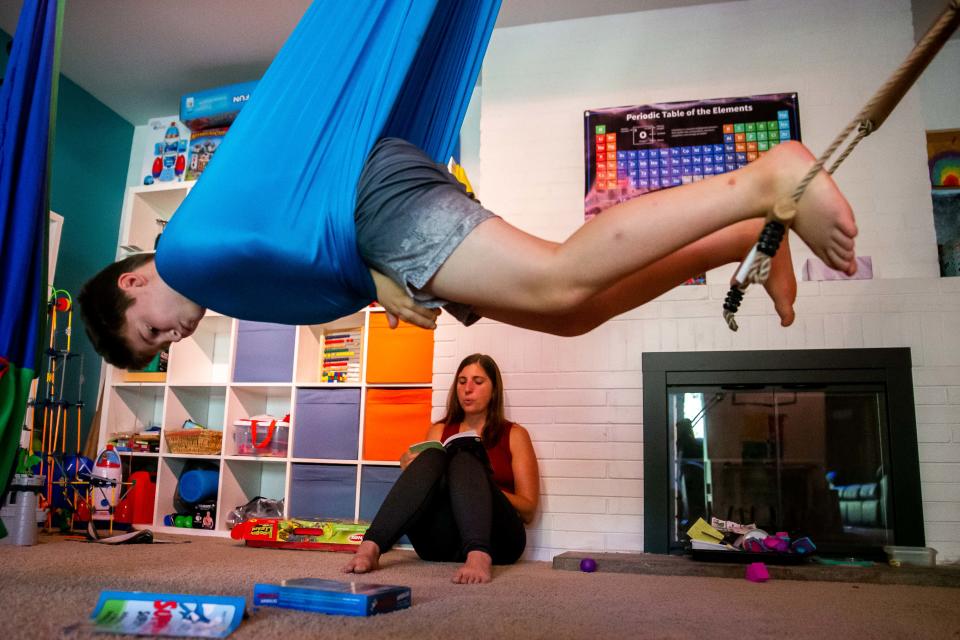
Our most vulnerable children
Like Kai, four out of five children secluded or restrained have disabilities.
Of the 1.4 million students in Michigan schools, 194,514 of them have disabilities.
Seclusion frequently involves adults forcing young children into a small, padded room and leaving them inside for a minute or sometimes as long as two hours. Restraint entails adults physically limiting a student’s movement using force.
Substantial scientific research published over decades shows the potentially harmful impact of secluding and restraining children, especially those with disabilities. An expert who spoke with the Free Press said there are no scenarios where seclusion is appropriate, arguing the practice creates trauma that can compound the behavioral problems educators used to justify seclusion.
Kai was 5 when diagnosed with autism during the spring of his kindergarten year. Seclusion and restraint soon became a part of his daily school routine.
His school, Black River Public School in Holland, didn’t report to the state how often Kai was forced into what they called the “time away room” or the “reset room.” But his mother, Cassie, kept track.
During one six-month period in first grade, she says school officials informed her Kai was secluded 93 times, sometimes in a seclusion room or sometimes in a conference room. Black River is a charter school with about 900 students. Administrators did not respond to a reporter's questions over email or voicemail.
Cassie and her husband, Daniel, said they believe the educators who made the choice to restrain or seclude Kai are largely dedicated professionals trying their best. But the parents feel the school failed Kai, and his educators' decisions still have a devastating impact on him and his family.
“It’s been deeply, deeply, deeply painful for me. … I had to quit my job to keep my son safe,” said Cassie, a former art teacher.
“I haven’t been able to have play dates in the same way as other people have. He’s not invited to birthday parties the way other people are. …This has been my entire identity for years. I haven’t been able to work. I haven’t been able to experience life the way other parents do and it’s very draining.”
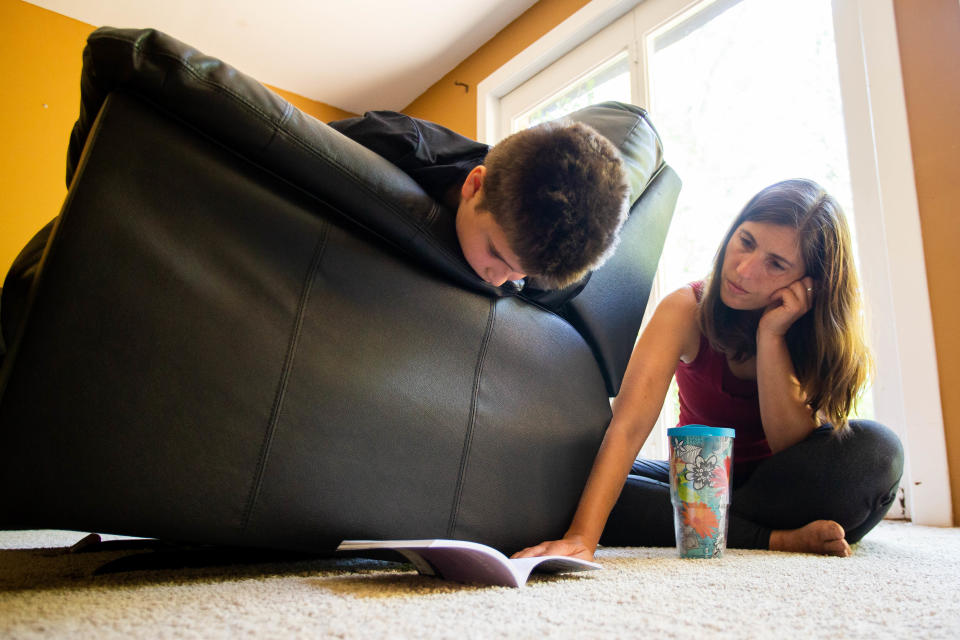
The nearly 94,000 instances of seclusion and restraint recorded by the state likely undercounts how often the tactics are used in Michigan schools, according to a Free Press analysis.
That’s because the elected officials who sought to ban these practices six years ago did not include ramifications for not following the law. There are no penalties, for instance, for the improper use of seclusion and restraint or for failing to report accurate numbers to the state.
Former Lt. Gov. Brian Calley in the past described the practices as “inhumane” and “barbaric.” The mid-Michigan Republican was the architect of the 2016 legislative package while he was in office with then-Gov. Rick Snyder. In a recent interview, Calley said the only way he could get enough votes was to ensure the bills explicitly excluded consequences for breaking the law.
“Of all my time in office, and all the initiatives that I worked on, the degree of difficulty in getting a ban on seclusion and restraint practices in schools is perhaps the most discouraging,” said Calley, now president of the Small Business Association of Michigan.
The law defines a behavioral emergency as “a situation in which a pupil's behavior poses imminent risk to the safety of the individual pupil or to the safety of others.” Seclusion and restraint may be used only as “a last resort emergency safety intervention,” according to the law.
Kai, on occasion, threw classroom materials and kicked them. Other times, he hit staff. Another time, during an emotional meltdown, records show Kai marked up another student’s arm with scissors.
“He was doing things that were threatening to safety. But at the same time you think, no one was really in danger,” Cassie said, noting that Kai was 5 years old at the time, her 3-foot-tall “little guy.”
Initially, his parents weren’t sure what was happening or what they should do. Kai would come home after spending minutes — but occasionally much longer, according to his mother — restrained or tucked away in a tiny room and not tell his mom and dad anything.
“I wouldn’t, to be honest,” Kai said, when asked what he said to his parents about being secluded. “Because it was too bad to talk about.”
When Cassie and Daniel pulled Kai out of school in 2020, Cassie took on the role of homeschooling Kai full-time. He’s made substantial emotional progress since then, thanks in part to therapy and medication.
But it’s a process that required a fair amount of privilege, time and money. Those resources may not be available to other Michigan students restrained or secluded thousands of times since Kai left the public school system.
With time to reflect, Kai and his parents are talking now. They want to speak for the thousands of Michigan families who’ve endured comparable treatment and demand change.
“I’m going to put this as blunt as I can: Seclusion and restraint should be illegal. It’s wrong,” Kai said.
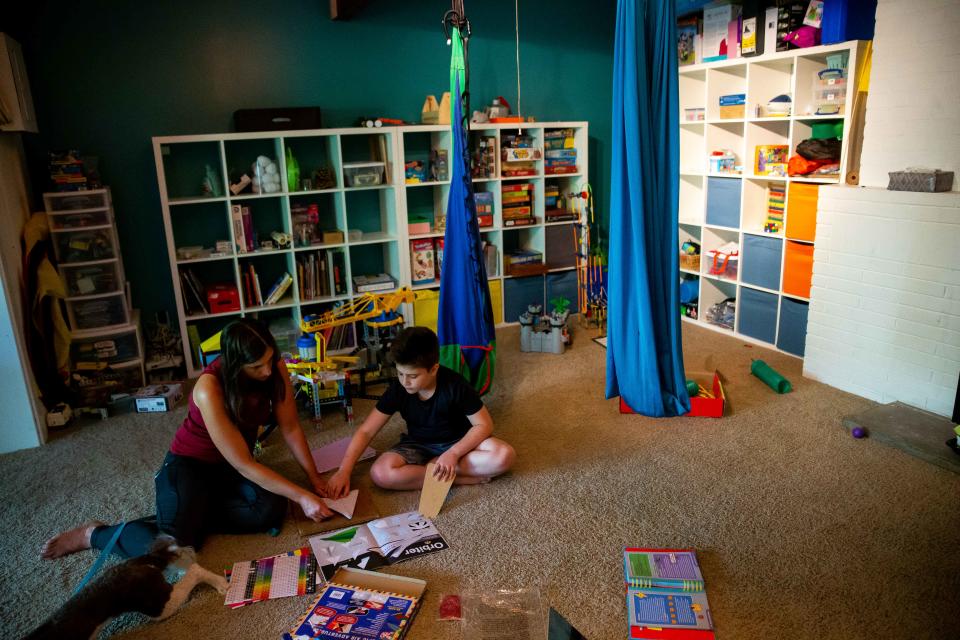
'It should never be an option'
There are many ways to physically or emotionally hurt a child, especially one with a disability, by using restraint and seclusion, said Laura Strunk, a professor at Minnesota State University and a practicing school psychologist for a rural school district in Minnesota.
Strunk conducted a national study on the use of seclusion and restraint in schools. She said beyond the possible physical perils of broken bones and bruises, even the act of touching a child or forcing them into isolation can have drastic psychological consequences.
"They have sensory issues, they may have been harmed by other people, so they might have some trauma that they’ve experienced in the past regarding touch from other people,” Strunk said.
Typically, she said, adults who use seclusion or restraint argue they're keeping the school community safe, or that they’re intervening to ensure a student has the chance to successfully regroup.
But, she argued, the techniques are almost always unnecessary, and justifiable rarely.
“It should never be an option, honestly. We know it’s an option, but it really should never really be an option,” Strunk said.
Frequently, educators responding to the student’s behavior are expecting a small child to effectively regulate their emotions, a tall order even for many adults who don’t have behavioral or learning challenges.
“The agitation of the staff person just escalates the student, and then they feel like the student is out of control and so they need to restrain them. When in fact, if you go back and if you could record the scenario of something like that, you would actually see that it was probably the school staff who was out of control,” Strunk said.
Strunk thinks using these practices comes down to a lack of trust between educator and child, and a lack of training. When students are agitated, trained educators can pick up on cues and address problems earlier to avoid restraint, she said.
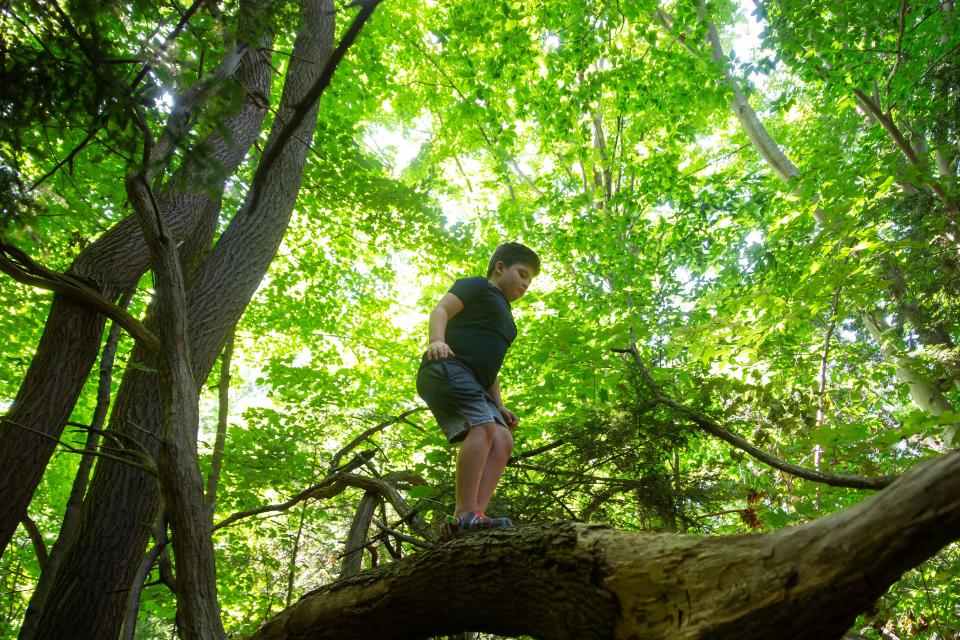
‘He doesn’t need punishment. He needs help’
Cassie, Daniel and Kai hope revealing their struggles will help others.
Cassie has kicked around doing something for years, in part because Kai wanted to take action. She says he wrote and delivered a speech to the mayor of Holland about problems with seclusion and restraint.
There’s very little the mayor can do about statewide education policy, but Cassie said Kai felt the speech went very well.
“I told him, ‘Someday, I’m going to give you a voice. I’m going to give you a venue. We’re going to make change,’” she said.
After pulling Kai from school, Cassie said they spent the next six months “deschooling.” They traveled, saw family and visited national parks. Eventually they returned to a somewhat more structured day, but lesson plans are crafted to help Kai manage his emotions and designed to change if he’s particularly enjoying a subject.
He’s learning: Cassie said when Kai got really into the founding fathers, he memorized the entirety of the musical “Hamilton.” When they traveled to New York for a showing, he sat spellbound for the whole performance.
“He is just so far beyond where he was. He can handle so much more,” Cassie said, noting he’s also taking new medication that's helpful. “He doesn’t need punishment. He needs help.”
After considerable discussion, Cassie and Daniel decided to try public school again. They’re starting slowly — Kai is going to a special local public school program a few days a week.
Cassie and Daniel are happy, but cautious. They want to believe this can work, and that it's OK to trust another school system. After months of discussions, educators have agreed in writing not to seclude Kai.
“If you take away seclusion as an option, they have to rethink the whole process,” Cassie said.
But Daniel worries none of those agreements will matter in the heat of the moment should Kai struggle to regulate his emotions in the classroom.
He’s afraid educators — with no one to stop them — will ignore the agreement and put Kai back in the room they’ve worked so hard to flee.
Read the full version of this article at freep.com.
UPDATE: After this story published, Shannon Brunink, head of school at Black River, wrote in an email response that the school's "practices are reflective of changes in the law in recent years and are consistent with MDE guidelines." He said the school intends to file data with the state to correctly reflect how many times students used its "time away room." He added that while at times a student is put in a conference room away from peers, a move that some would view as seclusion, the room's door is open and an adult works with the student.
This series was produced with assistance from the Center for Health Journalism at the University of Southern California as part of the 2022 National Fellowship at the USC Annenberg Center for Health Journalism.
— Contact Dave Boucher at dboucher@freepress.com and Lily Altavena at laltavena@freepress.com.
This article originally appeared on Detroit Free Press: Holland family, affected by autism, speaks out against seclusion and restraint in schools

